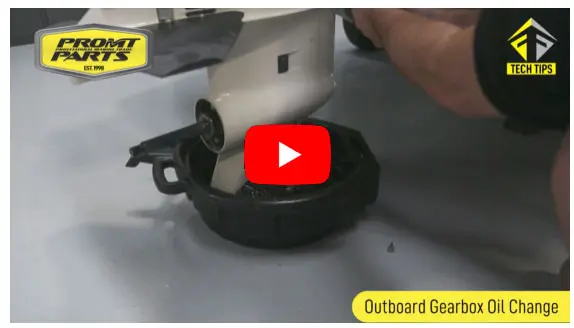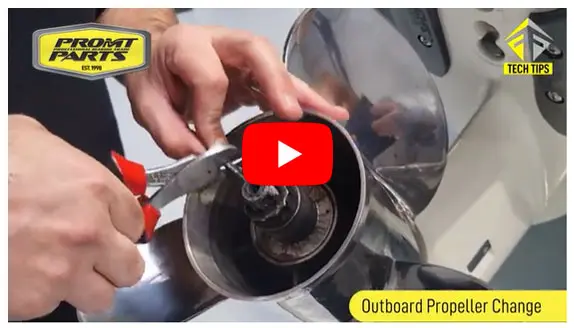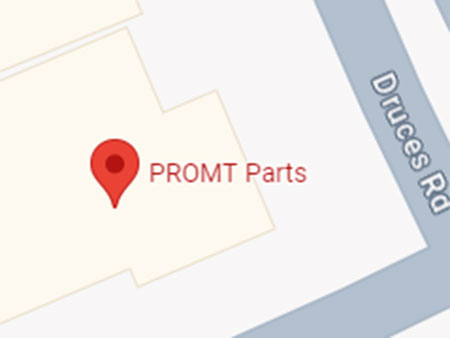- Home
- Cart
- Browse Products
- Catalogues
- Arco Marine
- Athena
- BEP Marine
- Bob's Machine Shop
- CDI Electronics
- Champion Spark Plugs
- Evinrude Accessories
- GB Remanufacturing
- JB Weld
- Jaltest Diagnostics
- Kicker Audio
- Martyr Anodes
- Mercury Accessories
- NGK Spark Plugs
- Narva Marine
- Shields Fuel Hose
- Solas Propellers
- Suzuki Accessories
- Volvo/Yanmar Parts (CROM)
- Wiseco Pistons
- Technical Resources
- Parts Diagrams
- Product Information
- Promotions
- PROMT News
- Prop Finder
- Video Library
- About Us
- Contact Us
- Find Us on Social

Spring Boat, Motor, and Trailer Preparation Guide:
As the sun starts to shine brighter, and the temperatures begin to rise, it's that time of the year again – spring is just around the corner! For boating enthusiasts in New Zealand, this means it's time to prepare your boat, motor, and trailer for the upcoming season of adventure on the water. At PROMT Parts, we understand the importance of a hassle-free boating experience, and we're here to help ensure your boat is in excellent condition. In this comprehensive guide, we'll walk you through all the essential steps to ensure your boat is ready to set sail, with a focus on outboard motor and inboard/sterndrive maintenance. Plus, remember that PROMT Parts offers an extensive range of marine parts available for same-day shipment, just in case you need anything to make your preparation process even smoother!
Step 1: Inspection and Cleaning
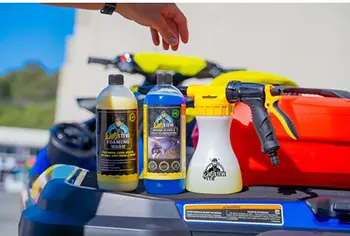 Before you launch your boat, it's important to give it a thorough inspection and cleaning:
Before you launch your boat, it's important to give it a thorough inspection and cleaning:
- Hull and deck: Clean the hull and deck to remove any algae, barnacles and debris. Check for cracks, dings, or other damage and make necessary repairs - Browse our cleaning products range.
- Safety equipment: Make sure all your safety equipment, such as life jackets, flares, and fire extinguishers, is in good working order and up-to-date.
- Electronics: Test all electronic equipment, including navigation systems, depth finders, and radios, to make sure they are functioning correctly. Also, test your bilge pumps to ensure they are working properly and that the pickups are clear of debris - Browse our bilge pump range.
- Anchors and winches: Inspect your anchor winch or capstan for operation and unusual noises. Inspect your anchor warp and chain for wear and tear. Make sure your anchor warp is adequately secured to the boat to avoid losing it overboard.
Once you have inspected and cleaned your boat, you can move on to the next step: maintenance.
Step 2: Engine and Mechanical Check
Now, let's focus on your boat's engine, whether it's an outboard motor or an inboard/sterndrive system:
- Oil: Change the oil every 100 hours or every two years for four-stroke outboard, inboard, or sterndrive engines. Inspect the oil for two-stroke outboards, and replace it if it is contaminated and ensure you have plenty in reserve for those impromptu fishing trips. Browse our two stroke and four stroke oil range.
- Gear oil: Change the lower unit gear oil for outboard motors and stern drives. If your oil is white or milky, it indicates that your oil is contaminated with water. Book your motor in for repairs immediately if you find oil in your gearbox - Browse our gear oil range.
- Fuel system: Inspect the fuel lines, filters, and tank for any signs of damage or leaks. Replace any worn-out components - Browse our fuel lines & connectors range.
- Fuel filters: Replace water-separating fuel filters and inspect them for any signs of water contamination in the fuel system. If your boat does not have a water-separating fuel filter, we recommend installing one - Browse our water separating fuel filter range.
- Freshen up fuel: Use fuel system additives to keep your fuel system clean and prevent the buildup of deposits. This can help to improve fuel economy, performance, and prevent engine problems - Learn more about our fuel system maintenance products.
- General Condition: Now is an ideal moment to inspect your motor for any signs of corrosion, particularly in the area around the steering arm, located beneath the front of the motor where the steering cable connects. This region is prone to corrosion. To address this, use a wire brush to clean any corroded parts. You can then choose to apply an anti-corrosion spray for metal protection or, alternatively, clean the affected areas and touch them up with outboard motor touch-up paint.
- Spark plugs: Spark plugs are a simple and important maintenance task you can carry out yourself. Change them according to your manufacturer's recommendations - View our spark plug charts.
- Steering and control cables: Inspect the steering and control cables for smooth operation. Lubricate and grease the steering cable if necessary. Replace any worn-out cables - Browse our steering & control system range.
- Battery and Wiring: Begin by testing your boat's battery to ensure it's holding a charge. Inspect all electrical connections for any signs of corrosion and ensure they are securely tightened. If you find corroded connections, use a wire brush to clean them, and apply an anti-corrosion spray to protect metal surfaces. When it comes to an affordable and user-friendly battery charger, the Mastervolt 4.3A Easy Charge Battery Charger is hard to beat.
- Cooling system: Inspect the cooling system for blockages or leaks. For inboard motors, flush the system and refill with the appropriate coolant. For outboard motors, run your motor and check that there is sufficient water flow through the tell-tale. Replace water flush muffs if they are old or perished - Browse our engine flushing range.
- Anodes: Inspect your boat and motor anodes for wear. Replace them if they are more than 50% worn. If you would like to learn more about anodes and cathodic protection, we have a comprehensive guide about anodes - Learn everything you need to know about anodes.
- Propellers: Inspect your propeller for damage, and remove it to check the propeller shaft seals for signs of fishing line. Grease your propeller shaft and refit your propeller ensuring adequate torque and be sure to refit the cotter pin that ensures the propeller nut does not work loose - Use our comprehensive propeller search tool.
Step 3: Trailer Maintenance
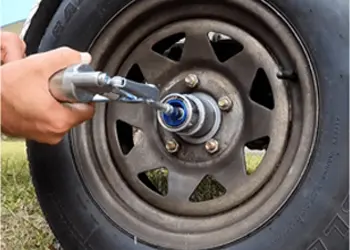 Your boat trailer is just as important as your boat, so it's important to inspect and maintain it regularly. Here is a checklist to help you get started:
Your boat trailer is just as important as your boat, so it's important to inspect and maintain it regularly. Here is a checklist to help you get started:
- Tyres and bearings: Inspect the tyres for signs of wear and tear, and make sure they are properly inflated. Jack up the trailer and spin the wheels to check the bearings. If the wheels spin freely with no vibration, the bearings are okay. Any rumbling or vibration indicates that the bearings need to be replaced. Also, check for excessive play in the wheels. A small amount of play is normal, but too much play means the bearings need to be adjusted. PROMT Parts offers wheel bearing grease and grease gun kits for greasing bearing buddies, if you have them fitted - Browse our grease & lubricants range.
- Rollers and suspension: Inspect the trailer's suspension, bolts, and wheel hubs for corrosion and rust. Surface rust can be cleaned with a wire brush and protected with corrosion-resistant spray. Make sure the wobble rollers are in good working order and the split pins are secure. It's also a good idea to remove the wheel nuts, inspect them for corrosion, and lubricate them so they don't rust on.
- Lights and brakes: Check all trailer lights and brake systems to make sure they are working properly. Inspect your trailer wiring plug for signs of corrosion, or damaged terminals and replace any burnt-out bulbs or faulty wiring. View our range of trailer lights and accessories.
- Trailer hitch: Inspect the trailer hitch, trailer chain, and D-shackles to make sure they are suitable for towing.
- Winch Rope: Retrieving your boat is a crucial part of boating, and winch ropes or wires are often neglected until they fail catastrophically during the retrieval process. To ensure your safety and the longevity of your equipment, regularly inspect your winch rope for signs of wear and tear. If you're unsure about its age or condition, consider replacing it. If you have a wire-style winch, upgrading to a synthetic rope can prevent rust on your hands and reduce the risk of painful cuts from splintering wires. Explore our range of trailer winch ropes.
Conclusion:
Preparing your boat, motor, and trailer for the spring season doesn't have to be a daunting task. By following these steps and utilizing PROMT Parts' extensive range of marine parts, you'll be well-equipped to enjoy a safe and smooth sailing experience. Remember that proper preparation now means more time on the water later, and PROMT Parts are here to help you every step of the way. Happy boating!

